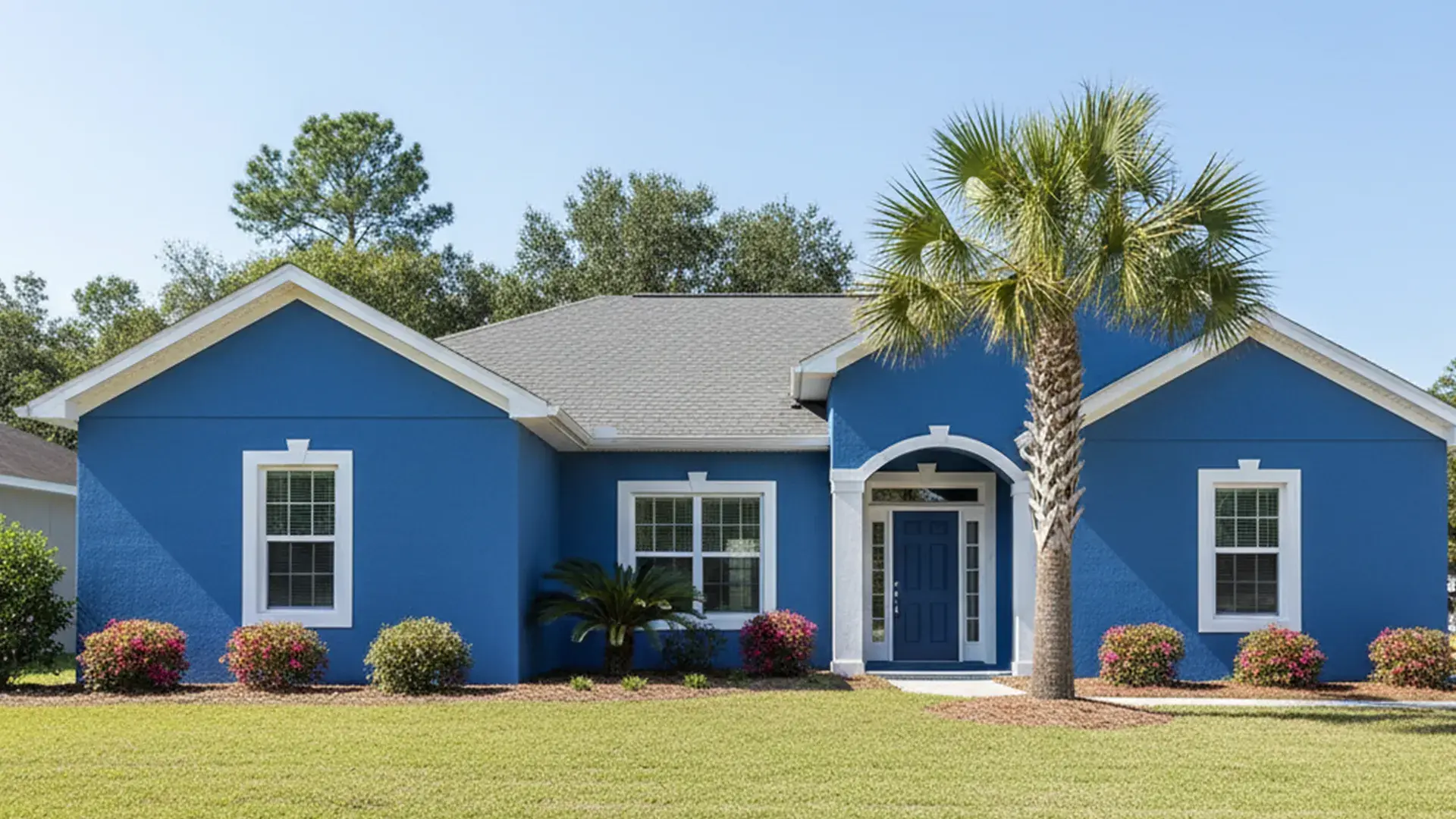Living in South Carolina means enjoying beautiful seasons, from sunny summers to mild winters. But that same climate—with its potent UV rays, high humidity, and occasional heavy rains—can be tough on your home's exterior and interior paint.
Your home's paint is more than just for looks; it's the first line of defense against moisture, pests, and decay. Spotting the early warning signs of paint failure can save you from costly repairs down the road. Not sure what to look for? Here are five key signs that your South Carolina home is due for professional paint maintenance.
1. Fading and Dull Color
What it looks like: The once-vibrant color on your siding or walls now looks dull, washed-out, or uneven. This is especially common on the sides of your home that get the most direct sunlight.
Why it's a problem: Significant fading is a sign that the sun's UV radiation has started to break down the paint's pigment and resin. While it may seem like a purely cosmetic issue, it means the paint is losing its protective qualities, making it more susceptible to moisture and damage.
2. A Powdery Residue (Chalking)

What it looks like: If you wipe your hand across the painted surface and it comes away with a fine, chalky powder, you're seeing chalking.
Why it's a problem: Chalking is a clear signal that the paint film is deteriorating. The paint's binder is breaking down due to exposure to sun and moisture, leaving the loose pigment behind. If left unaddressed, this surface will be unsuitable for a new coat of paint, leading to poor adhesion and premature failure of the new paint job.
3. Cracking, Peeling, or Flaking

What it looks like: You can see visible splits, cracks, or sections of paint lifting and flaking away from the surface underneath. This often looks like cracked mud or peeling skin.
Why it's a problem: This is one of the most urgent signs. When paint cracks and peels, it leaves the underlying material—whether it's wood, stucco, or siding—completely exposed to the elements. In our humid South Carolina climate, this is an open invitation for moisture intrusion, which can lead to wood rot, mold growth, and significant structural damage.
4. Mold, Mildew, or Algae Growth

What it looks like: Dark, unsightly stains, spots, or streaks that are typically black, green, or grey. You’ll often find these in shaded, damp areas like under eaves or on the north-facing side of your home.
Why it's a problem: Besides being unattractive, mold and mildew feed on the paint film and can penetrate the surface underneath. If you simply paint over it, the growth will continue to spread and will likely blister or peel the new paint right off. This requires specialized cleaning to ensure the surface is properly sterilized before any new paint is applied.
5. Bubbling or Blistering

What it looks like: Pockets of paint are lifting from the surface, creating bubbles or blisters.
Why it's a problem: Bubbles are almost always caused by a loss of adhesion due to trapped heat or moisture. Either water has gotten behind the paint layer or intense sun has heated the surface, causing the paint to expand and detach. In either case, the protective seal is broken. The source of the moisture or heat issue must be addressed before scraping, sanding, and repainting.
Don't Wait for a Small Problem to Become a Big Expense
If you’ve noticed any of these signs on your home, acting now is the best way to protect your investment. Proactive paint maintenance is far more affordable than extensive repairs.
The team at Brightline Painting specializes in addressing the unique challenges of the South Carolina climate. We provide thorough preparation and use high-quality materials to ensure your home isn't just beautiful, but also well-protected.
Ready to restore your home's curb appeal and defense against the elements? Call us at (864) 900-9513 today for a free, no-obligation estimate!

